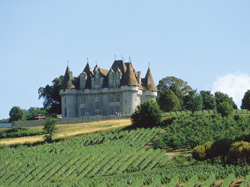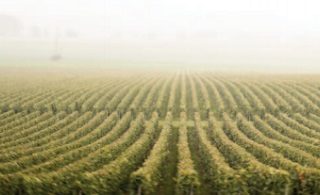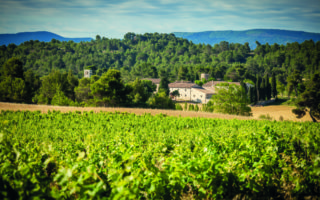Bergerac wine: Behind the label

I’m always amused when I arrive at Bergerac airport as we wait in a hangar while one man pushes suitcases from the hold through a hole in the wall on to a kind of non-automated conveyor belt. The belt only works when holidaymakers start moving cases along it by sheer brute force in order to allow the man to add more through the hole. Of course this means that the end cases fall unceremoniously off the edge onto the concrete floor unless they are swept up by their anxious owners. It’s rather pleasingly amateurish. However, the wines from Bergerac are far from amateur, and it pays to get to know these sometimes under-rated gems from the south west of France.
Bergerac lies just to the east of some of Bordeaux’s most famous vineyards. Like the wines of Bordeaux, those of Bergerac are made from blends of grapes. Generally, the same varieties are used in both regions. Reds are based on Cabernet Sauvignon and Merlot, although Cabernet Franc, Cot (known elsewhere as Malbec) and, to a lesser extent, Fer Servadou, Mérille and Périgord are also used.
Whites are largely made from Sauvignon Blanc and Sémillon, although Muscadelle is sometimes mixed into the blend and some appellations allow Chenin Blanc, Ugni Blanc or Ondenc. For the sweets, Monbazillac is a blend of three varieties, Sauvignon, Sémillon and Muscadelle, while Saussignac can also use a little Ondenc and Chenin Blanc.
The Bergerac vineyard is made up of seven appellations – Bergerac, Côtes de Bergerac, Montravel, Pécharmant, Saussignac, Monbazillac and Rosette, however the semi-sweet wines of Rosette are hardly ever sold in the UK, so you will have to wait until you go there to taste them.
Bergerac wines can be white, red or rosé. The terroir of the vineyards is determined by their proximity to the River Dordogne and its tributaries, and their location among the rolling limestone hills and limestone and gravel plateaus. They are pleasing refreshing wines, often with floral and fruit driven characteristics.
Red wines from Côtes de Bergerac have a slightly more complex style than straight Bergerac, often with a higher degree of alcohol and oak. They give smooth, rich wines redolent of red stone fruits and leather.
Montravel offers reds, and dry and semi-sweet whites. Its soils are mainly composed of chalky limestone. The dry whites are particularly fine, with a grassy minerality and citrus and floral aromas.
Further to the east, just outside the pretty town of Bergerac lies Pécharmant which produces red wines, whose grapes are grown on a unique soil, composed of sand, gravel and clay with a good sprinkling of iron deposits. This gives the wines a tangy minerality and rich, earthy depth.
The sweet wines of Monbazillac are similar in style to those of nearby Sauternes. The vineyards, which are planted on clay-limestone soils, are subject to unusual climatic conditions: as autumn rolls in, so too does a fog, which blankets the vineyards each morning before the heat of the afternoon sun burns it off. This promotes the growth of the Botrytis cinerea fungus, or noble rot which helps to concentrate the sugars in the grapes in the run-up to harvest.
Saussignac also offers unctuous sweet wines which are richer and more toffeed than those of Monbazillac. Its vineyards
are planted on chalky clay soils rich in iron, which gives the wines their distinctive taste.
Bergerac offers a wide range of wine styles, each suited to drinking with food (although the rosés and dry whites are particularly refreshing to drink on a terrace
in the sun!). If you plan to take any back on the flight – make sure your case is sturdy and strong and the bottles are well protected!
● Chris Skyrme is a public relations consultant in the wine industry and is a judge for the International Wine Challenge.
Share to: Facebook Twitter LinkedIn Email
More in food, Removals, river, vineyards, wine
Leave a reply
Your email address will not be published. Required fields are marked *



